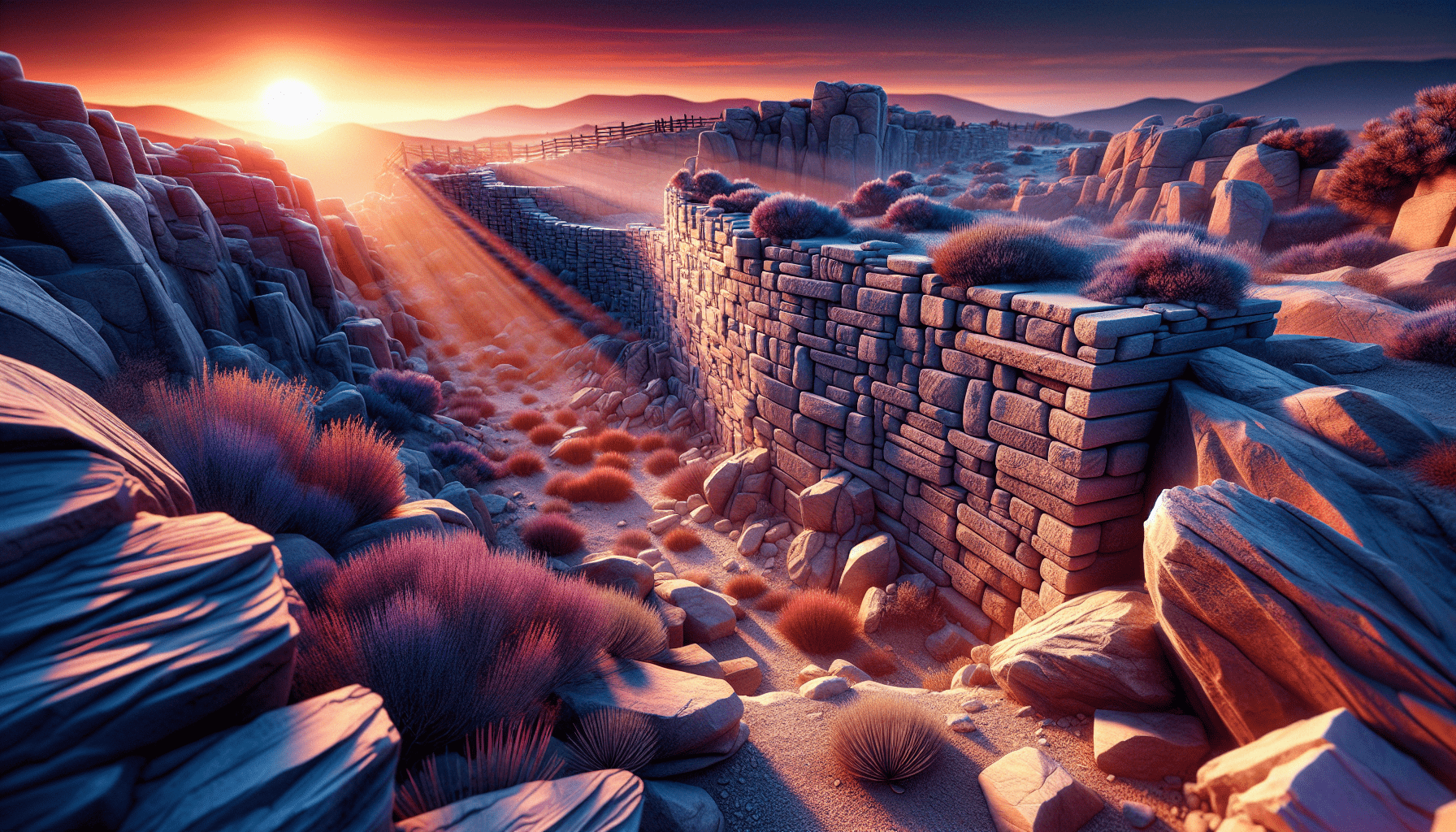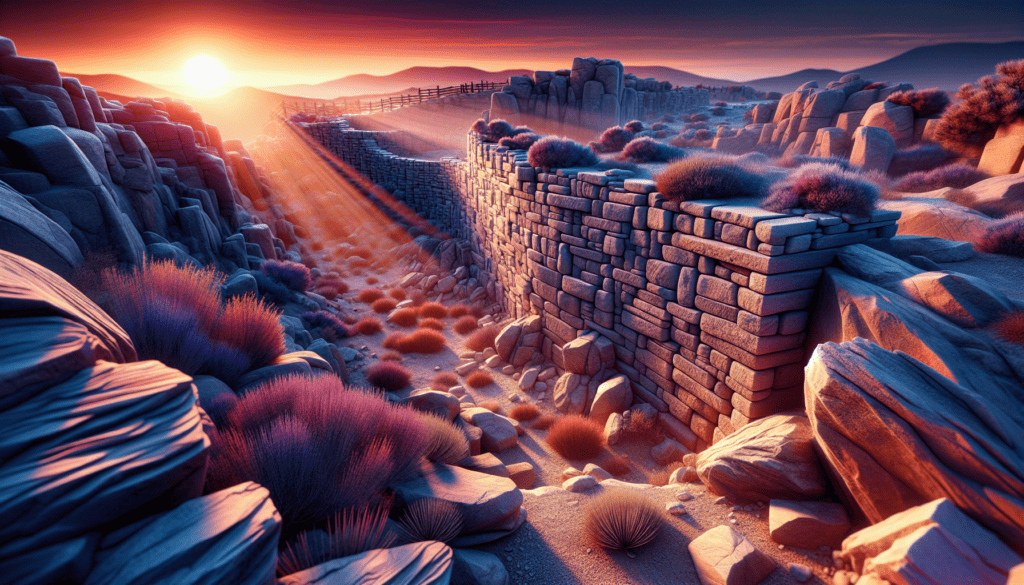
When it comes to mastering the art of retaining wall construction, it’s crucial to consider both the practical and visual aspects of stone wall design. Whether you’re exploring garden wall ideas or block wall design, incorporating creative elements such as different materials, textures, and plantings can elevate the overall aesthetic of a space.
The key to successful retaining wall construction lies in understanding soil conditions, drainage needs, and the wall’s purpose.
From brick wall design to stone wall design, it’s essential to understand local regulations and codes, as well as proper construction techniques.
Rockwell Construction specializes in rock wall retaining walls and helical deck piers as a trusted General Contractor, providing expert guidance for your wall design needs.
Click here to learn more about rockwell-construction.com
Factors to Consider in Designing a Retaining Wall
When it comes to retaining wall design, the choice of materials is a critical factor to consider, whether it’s a concrete wall design or a terraced retaining wall. The selection of concrete, wood, or stone for your wall design will impact the overall durability and aesthetic appeal of the structure.
The terrain of the area where the retaining wall will be installed plays a significant role.
Whether it’s a sloped, tiered, or terraced landscape, the design must adapt to the natural features of the land to provide effective support.
Proper drainage and reinforcement techniques are also essential to ensure the stability and longevity of the retaining wall.
Choosing the Right Materials for Your Landscape Wall
When it comes to choosing the right materials for your landscape wall, it’s crucial to consider various factors such as reinforced wall design and retaining wall drainage. Natural stone, concrete blocks, and timber each have their own benefits and considerations, so it’s important to assess your specific needs and preferences.
Climate, maintenance requirements, and the structural design of the wall are all important factors to take into account.
Whether you opt for a gabion wall design, gravity wall design, cantilever wall design, or anchored wall design, proper drainage and reinforcement techniques are essential for stability and longevity.
With the help of professionals like Rockwell Construction, who specialize in rock wall retaining walls and helical deck piers, you can create a landscape wall that meets all your requirements.
Factors to Consider for Landscape Wall Materials
- Natural stone provides a timeless and natural look for your landscape wall.
- Concrete blocks offer durability and a wide range of design options.
- Timber is a sustainable and cost-effective choice for landscape walls.
- Proper drainage and reinforcement techniques are essential for stability and longevity.
Innovative Techniques for Retaining Wall Construction
When it comes to innovative techniques for retaining wall construction, the latest advancements in retaining wall engineering play a crucial role in ensuring retaining wall stability. Modern construction technologies have greatly improved the efficiency and effectiveness of retaining wall projects, resulting in enhanced stability and reduced erosion.
The use of new eco-friendly materials, such as geosynthetics, not only offers environmental benefits but also enhances the overall aesthetics of the structure.
The introduction of automated machinery has made maintenance easier, ensuring precise and long-lasting results.
These cutting-edge approaches are reshaping the field of retaining wall construction, paving the way for sustainable and durable solutions.
Retaining Wall Construction
- Advanced engineering techniques improve retaining wall stability.
- Modern construction technologies enhance efficiency and effectiveness.
- Use of eco-friendly materials such as geo-synthetics offers environmental benefits.
- Introduction of automated machinery makes maintenance easier.
Ensuring Proper Drainage in Your Retaining Wall Design
When designing a retaining wall, it is important to ensure proper drainage for its function and longevity. Including drainage materials such as gravel or perforated pipe can effectively prevent water build-up and erosion, which safeguards the stability and durability of the structure.
It is also essential to create a slight slope away from the wall and use porous materials for construction to facilitate proper drainage.
Consideration of soil type and local climate is important in planning for effective drainage.
By adhering to specific regulations and guidelines for drainage in retaining wall designs, you can ensure the wall’s purpose is fulfilled while avoiding potential damage and instability.
Best Practices for Maintaining Stability of a Retaining Wall
Retaining wall textures play a crucial role in maintaining stability and longevity, especially in the face of environmental factors and soil conditions. Rockwell Construction, a general contractor specializing in rockwall retaining walls and helical deck piers, understands the unique challenges of retaining wall construction.
By exploring different shapes and textures, innovative solutions can be found to enhance both the aesthetic appeal and stability of the wall.
Staying informed about the latest retaining wall designs and inspirations will help make informed decisions for long-term stability and maintenance.
With Rockwell Construction, you can ensure that your retaining wall is built to last.
Benefits of Rockwell Construction’s Retaining Walls
- Retaining wall textures are crucial for stability and longevity.
- Exploring different shapes and textures can enhance both aesthetic appeal and stability.
- Staying informed about the latest retaining wall designs and inspirations is important for long-term stability and maintenance.
- Rockwell Construction specializes in rock wall retaining walls and helical deck piers.
Enhancing the Aesthetics of Your Garden Wall
When it comes to transforming the look of your garden wall, there are several creative approaches to consider, including various retaining wall techniques that can enhance both the aesthetic appeal and structural integrity of your outdoor space. You can incorporate a variety of textures and shapes to add visual interest and depth to the space.
Experimenting with different materials, such as natural stone, brick, or wood, can help create a unique and personalized aesthetic.
Adding architectural elements, like arches or decorative panels, can elevate the overall design.
Embracing the use of vibrant colors or patterns can bring a lively and dynamic feel to the wall. By exploring these different techniques, you can create a garden wall that is structurally sound.
Regulations and Guidelines for Retaining Wall Installation
When it comes to retaining wall guidelines, it’s important to adhere to specific regulations and best practices to ensure a successful and compliant project. Each region may have its own set of requirements for materials, permits, and approvals, so it’s crucial to be aware of these regulations.
Factors such as soil stability, drainage, and safety measures need to be carefully evaluated to meet retaining wall guidelines and best practices.
Staying informed about the latest industry solutions and innovations can also help in overcoming retaining wall challenges.
By prioritizing these regulations and guidelines, a rock wall retaining wall or helical deck pier installation can be carried out efficiently and effectively.
